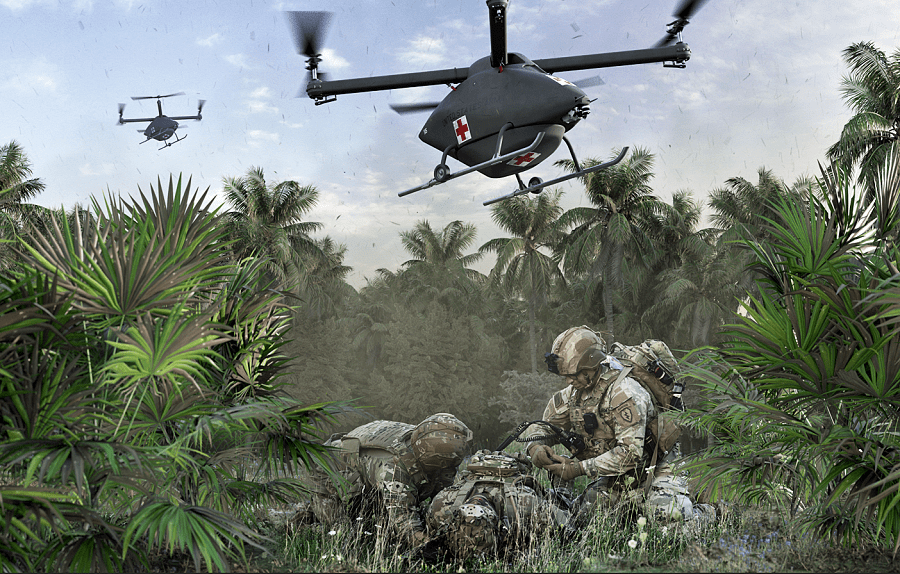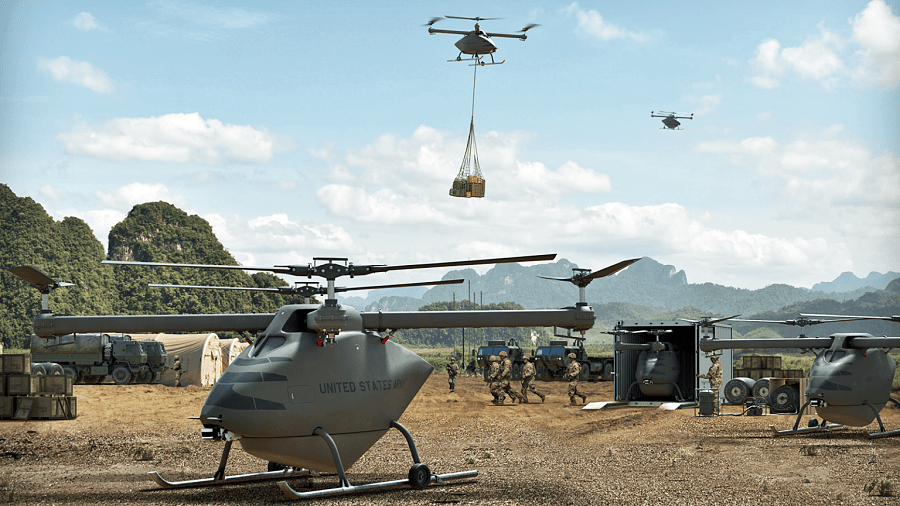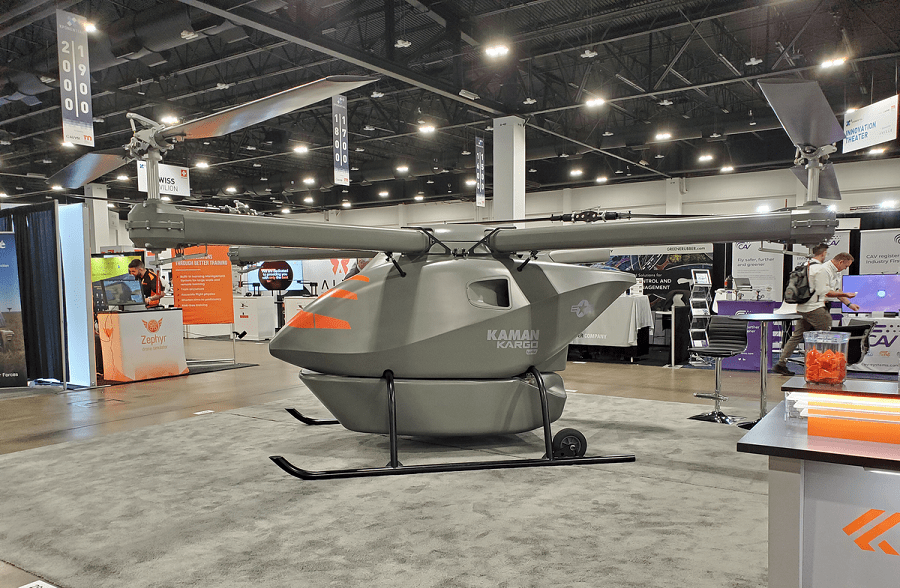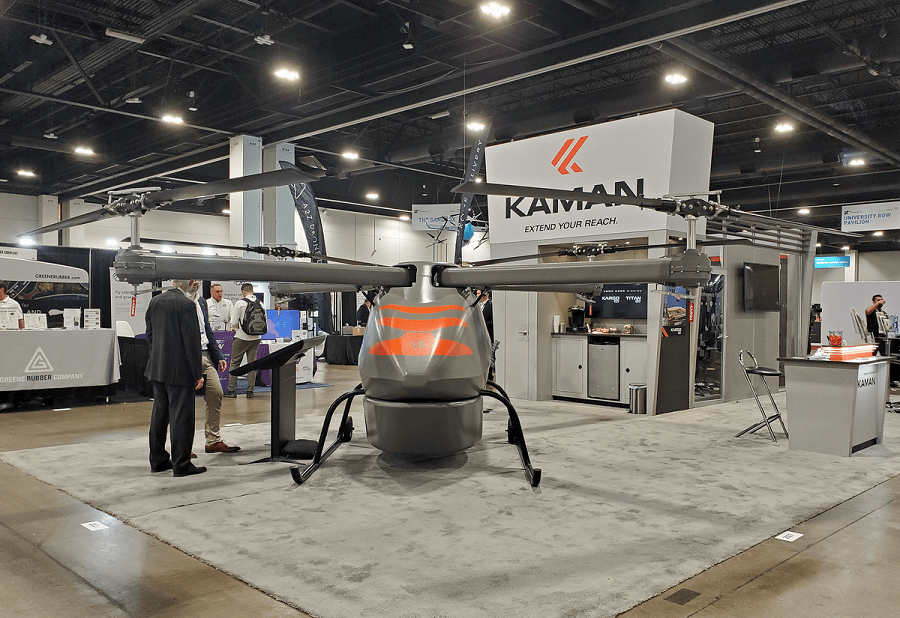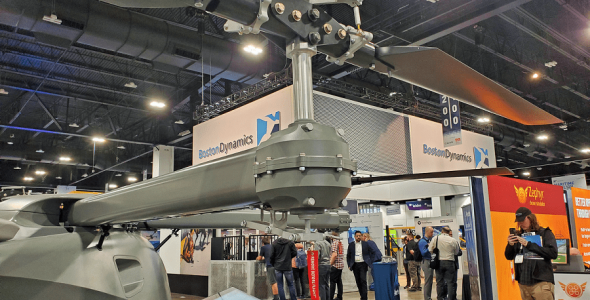On 4 October, the Army announced its choice of the Kaman KARGO for a Heavy-Lift Vertical Take Off & Landing (HVTOL) drone capable of carrying supplies to troops in combat, the wounded to safety, or specialized sensor packages to perform reconnaissance, electronic warfare, and other roles. The Marines had picked KARGO last year as a candidate for the Medium variant of their Unmanned Logistics Systems, Air (MULS-A), along with a rival drone from Leidos. KARGO is built by Kaman and partner Near Earth Autonomy. Two full-sized aircraft are ready to fly, and another is about to finish pre-flight checks. KARGO is an all-new design that carries a modest 800 pounds and with rotors folded can fit in a standard ISO shipping container. The ability to teleoperate the vehicle remains but RC control is now at a much reduced level. Kaman notes that “KARGO requires far less reliance on a human operator in remote control.”
Kaman provides the basic automation to operate unmanned, and Near Earth adds more complex autonomy to adapt to changing circumstances. If the drone is landing at its GPS-pinpointed destination and a truck drives into its path, or if the landing zone is compromised or does not conform to a satellite generated map, KARGO will update its internal model of the external world, and adjust its course. “One benefit of this kind of split: Developers can segregate basic safety functions, which require rigorously deterministic, consistently predictable IF-THEN programming, and higher-order understanding of changing environments, which requires often-opaque machine learning algorithms.” KARGO is shown in medevac configuration and on a resupply mission. Watch a video, here. For more information, visit Breakingdefense.com. Photos courtesy of Kaman, Breakingdefense.com, Lucien Miller and Tom Atwood.
